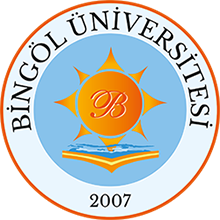A comparison of electrical parameters of Au/n-Si and Au/(CoSO 4 –PVP)/n-Si structures (SBDs) to determine the effect of (CoSO 4 –PVP) organic interlayer at room temperature
Tarih
2019Yazar
Altındal, Ş. and Sevgili, Ö. and Azizian-Kalandaragh, Y.
Üst veri
Tüm öğe kaydını gösterÖzet
In this study, the Au/n-Si structures with and without (CoSO 4 –PVP) organic interlayer were fabricated on the same n-Si wafer and electrical characteristics of them were analyzed by using current, capacitance, and conductance measurements in forward and reverse bias voltages and experimental results were compared with each other. The values of ideality factory (n), zero-bias barrier height (Φ Bo ), and the rectifying ratio (RR at ± 3 V) for Au/n-Si and Au/(CoSO 4 –PVP)/n-Si structures were found as 2.453, 0.732 eV, 2.01 × 10 3 and 2.489, 0.799, 5.37 × 10 4 by using the I–V measurements, respectively. The RR of Au/(CoSO 4 –PVP)/n-Si structures at ± 3 V was 26.77 times higher than Au/n-Si structure. The concentration of donor-atoms (N D ), Fermi energy (E F ) and barrier height for these two structures were found as 15.06 × 10 14 cm −3 , 0.254 eV, 0.744 eV and 2.310 × 10 14 cm −3 , 0.303 eV, 1.010 eV from the C −2 –V characteristics in the reverse bias region at 1 MHz in dark, respectively. These results show that the use of (CoSO 4 –PVP) polymer interface layer at Au/n-Si interface improves the performance of these structures. Additionally, a simple ultrasound-assisted method has been utilized to grown cobalt sulfide nanostructures. The morphological and structural analyses of them have been investigated by scanning electron-microscopy, and X-ray diffraction methods. © 2019, Springer Science+Business Media, LLC, part of Springer Nature.
Bağlantı
https://www.scopus.com/inward/record.uri?eid=2-s2.0-85064245171&doi=10.1007%2fs10854-019-01257-5&partnerID=40&md5=64a66714533d0aff3a67c3ffad62065ahttp://acikerisim.bingol.edu.tr/handle/20.500.12898/4243
Koleksiyonlar

DSpace@BİNGÖL by Bingöl University Institutional Repository is licensed under a Creative Commons Attribution-NonCommercial-NoDerivs 4.0 Unported License..













